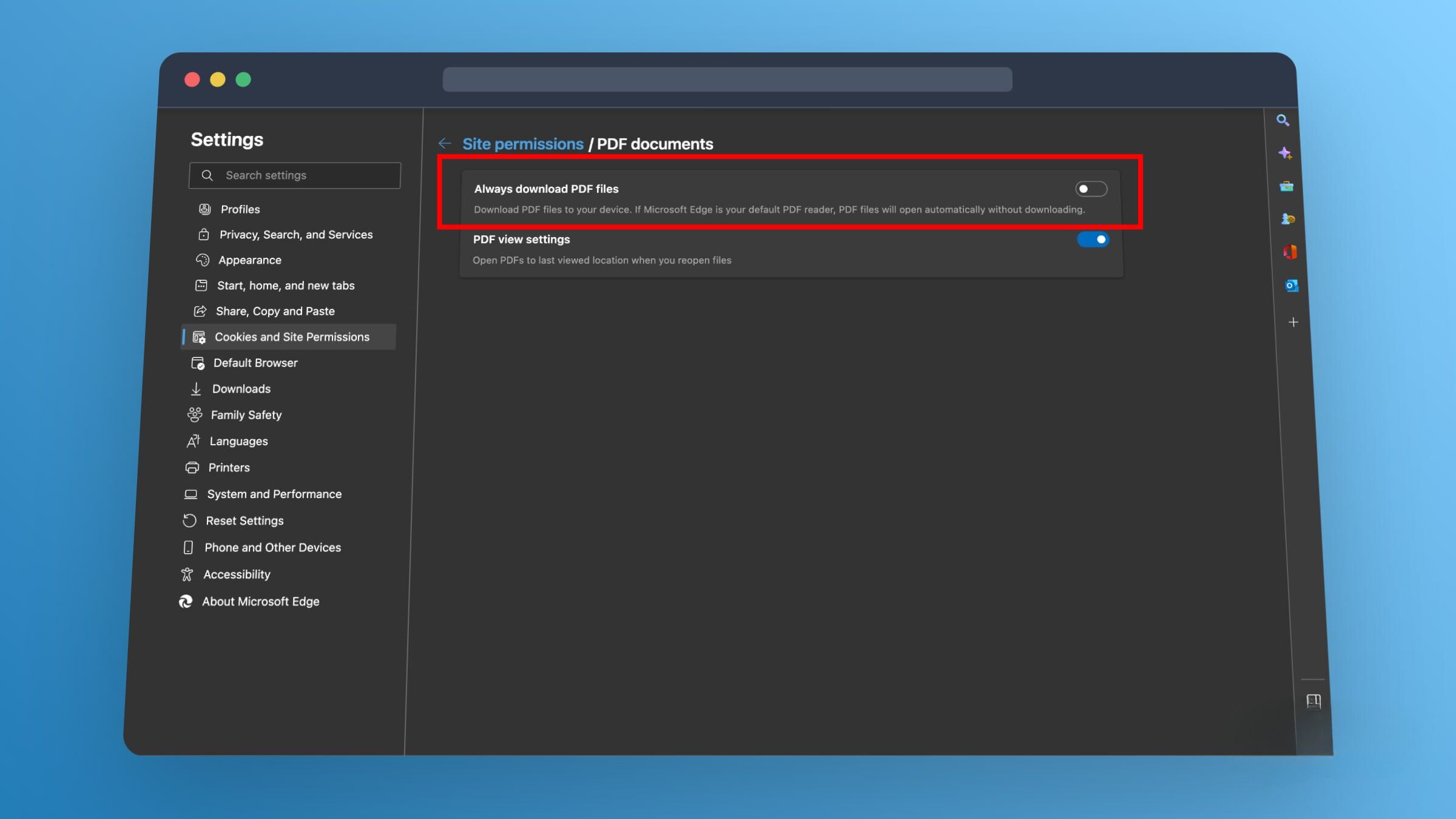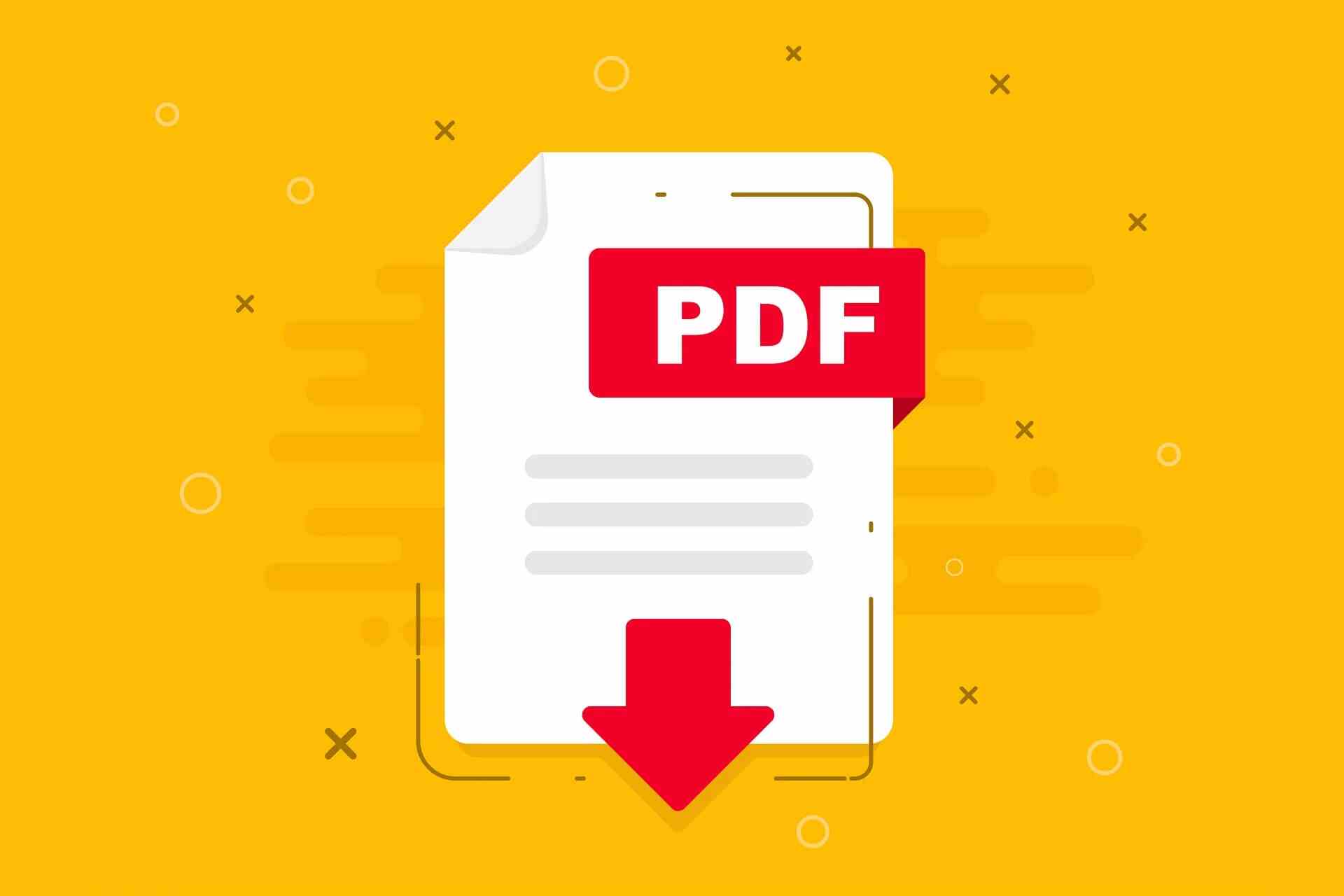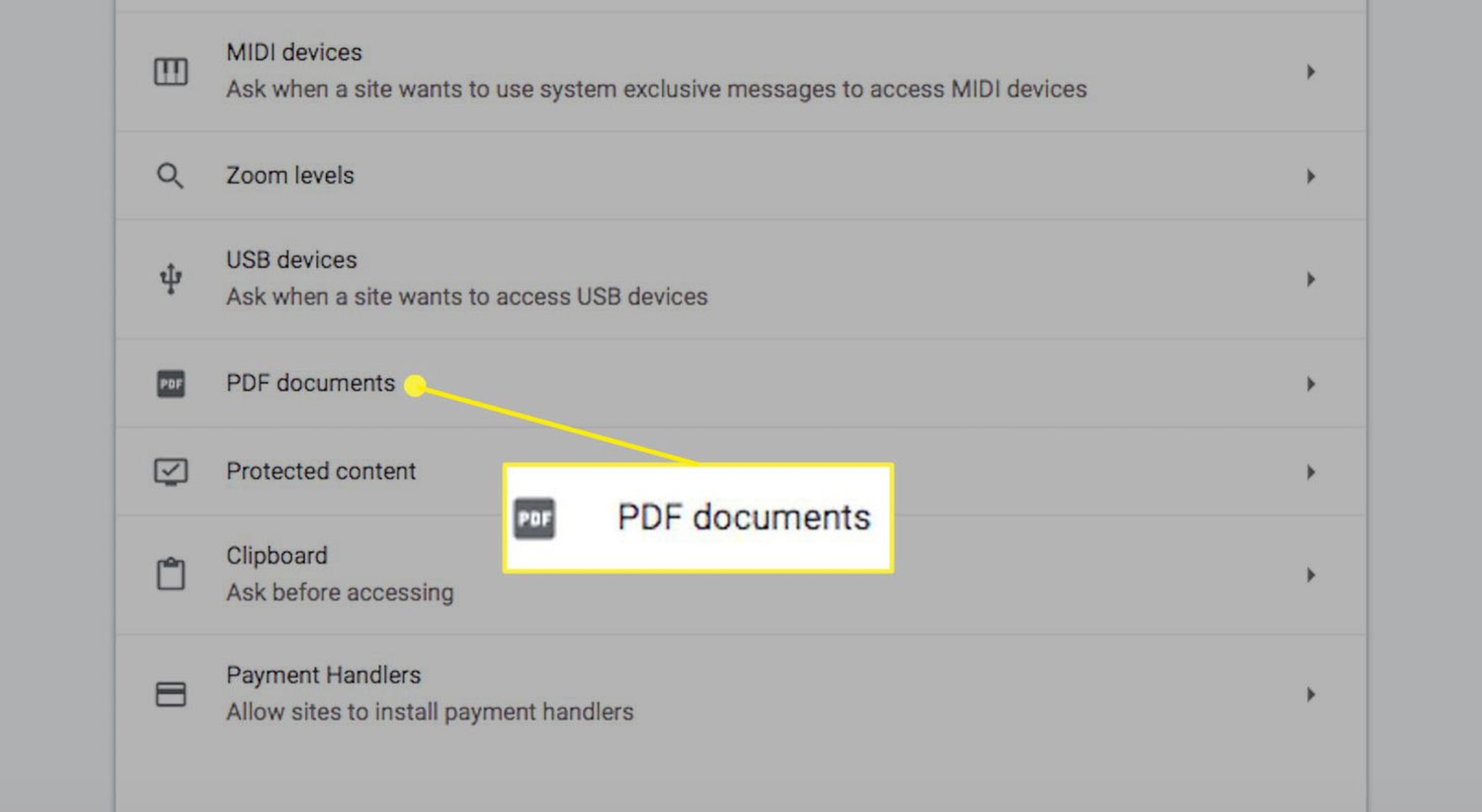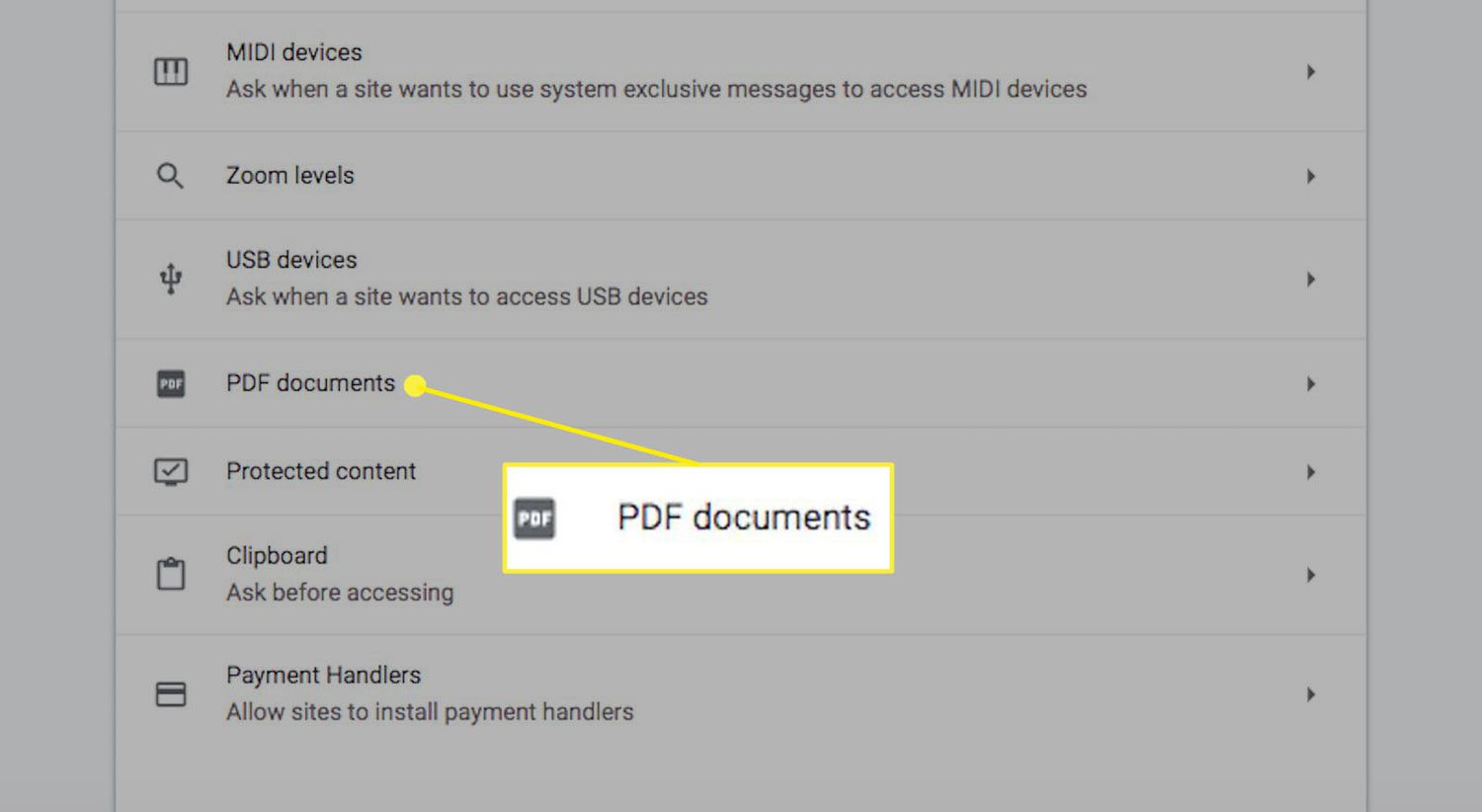Introduction
Have you ever encountered the frustrating experience of a PDF file automatically opening after you download it? This can be especially inconvenient when you’re trying to save the file for later or if you simply prefer to have more control over opening PDFs. Fortunately, there are several methods you can use to stop PDFs from automatically opening after download, allowing you to decide when and how to access them.
In this article, we will explore various techniques to prevent PDF files from automatically opening after downloading. These methods are applicable to popular web browsers such as Google Chrome, Mozilla Firefox, and Microsoft Edge. You can choose the method that best suits your needs and browser preferences.
Whether you’re a student trying to save research papers, a professional managing important documents, or a regular internet user who prefers to manually open files, these methods will enable you to regain control over the opening of PDFs.
So, let’s dive into the different techniques you can employ to cease the automatic opening of PDF files after download, allowing you to manage your files more effectively and streamline your browsing experience.
Method 1: Changing Browser Settings
One of the most straightforward ways to prevent PDF files from automatically opening after download is by adjusting the settings in your web browser. Here’s how you can do it:
- Open your preferred web browser and navigate to the settings or preferences menu. This can usually be accessed by clicking on the three-dot menu icon in the top-right corner of the browser window.
- Look for the “Downloads” or “Advanced” section within the settings menu.
- Within the downloads settings, you should find an option related to handling PDF files. It may be called “Open PDFs automatically” or something similar.
- Disable this option by unchecking the box or toggling the switch to the off position.
- Once you’ve made the change, the browser will no longer automatically open PDF files after they are downloaded.
- You can now manually open the downloaded PDF files by locating them in your computer’s designated download folder.
It’s important to note that the steps might vary slightly depending on the browser you’re using. However, most popular browsers offer similar options to disable automatic opening of PDF files. Take a few minutes to explore your browser’s settings and look for the appropriate section related to downloads and file handling.
This method gives you more control over how and when you open PDF files, ensuring that they don’t automatically launch in your browser after downloading. Now you can keep your download folder organized and access the files when it’s most convenient for you.
Method 2: Disabling PDF Viewer Plugin
If changing the browser settings doesn’t solve the issue, another effective method to stop PDF files from automatically opening after download is by disabling the PDF viewer plugin. Follow these steps to disable the plugin:
- Launch your web browser and go to the settings or preferences menu. Look for the “Extensions” or “Add-ons” section.
- Locate the PDF viewer plugin in the list of installed extensions or add-ons. This plugin is usually provided by default in most browsers for handling PDF files.
- Disable or uninstall the PDF viewer plugin by clicking on the appropriate option.
- Once the plugin is disabled, save the changes and restart your browser.
By disabling the PDF viewer plugin, you’re removing the default tool used to automatically open PDF files after downloading. Instead, your browser will prompt you to either save the file or open it with a different program when you click on a PDF link.
After disabling the plugin, any downloaded PDF file will be saved to your designated download folder, and you can manually open it using a separate PDF reader installed on your computer. This ensures that you have full control over accessing and managing your PDF files, without them automatically launching in your browser.
Remember that different browsers may have different methods for disabling plugins, so be sure to consult your browser’s documentation or support resources if you encounter any difficulties.
Method 3: Clearing Download History
If PDF files continue to open automatically after download, even after adjusting browser settings, clearing your download history might help resolve the issue. Clearing the download history can be done by following these steps:
- Open your web browser and access the history menu. This can usually be found in the browser’s settings or preferences.
- Navigate to the section specifically related to download history.
- Select the option to clear or delete the download history.
- Confirm the action by following any additional prompts or dialog boxes.
By clearing your download history, you’re essentially removing the record of previously downloaded files. This can help eliminate any conflicts or settings that may be causing PDF files to open automatically.
After clearing the download history, try downloading a PDF file again to see if the issue has been resolved. The newly downloaded file should no longer open automatically, giving you the freedom to choose when and how you access it.
It’s important to note that clearing your download history will remove the record of all previously downloaded files, not just PDFs. If you have any important files saved in your download history, make sure to back them up before clearing the history to avoid losing them.
If clearing the download history doesn’t stop PDF files from automatically opening after download, don’t worry. There are still more methods you can try to regain control over the opening of PDF files, which we will explore in the subsequent sections.
Method 4: Using Download Manager Extensions
If you’re still facing the issue of PDF files automatically opening after download, utilizing download manager extensions can provide an effective solution. These extensions offer advanced control over your downloads and can help prevent automatic file opening. Follow these steps to make use of download manager extensions:
- Open your web browser and navigate to the browser’s extension store or marketplace.
- Search for a download manager extension that suits your needs. Popular options include “DownThemAll!” for Firefox and “Internet Download Manager (IDM)” for Chrome.
- Select the download manager extension you want to install and click on the “Add to [Browser Name]” button.
- Follow the on-screen instructions to install and activate the extension.
Once the download manager extension is installed, it will integrate with your browser’s download functionality and provide additional features and options. These extensions often include the ability to specify a download location, set file naming conventions, and manage file types and file opening behavior.
By configuring the settings of the download manager extension, you can ensure that PDF files are not automatically opened after download. Instead, they will be saved to the location specified in the extension’s settings, allowing you to manually open them at your convenience.
Remember to explore the options and settings provided by the download manager extension to fully customize the download behavior according to your preferences.
Using download manager extensions not only solves the issue of PDF files automatically opening after download but also enhances your overall download experience by providing more control and flexibility.
If you prefer manual control over your downloads and want to prevent automatic opening of PDF files, utilizing download manager extensions is an excellent choice.
Method 5: Renaming the PDF File
If you’re looking for a quick and temporary solution to prevent PDF files from automatically opening after download, you can try renaming the file. Renaming the PDF file can help bypass the default settings that trigger automatic opening. Follow these steps to rename the PDF file:
- After the PDF file is downloaded, navigate to the designated download folder on your computer.
- Locate the downloaded PDF file and right-click on it.
- Select the “Rename” option from the context menu.
- Change the file name to something different or append a different file extension to it. For example, you can add a “.txt” or “.docx” extension at the end of the file name.
- Press the Enter key or click outside the file to save the new name.
Renaming the PDF file essentially tricks the default settings into perceiving it as a different file type. This prevents the automatic opening behavior associated with PDF files.
Once you’ve renamed the file, you can manually open it by double-clicking on it and selecting the appropriate program to open it with. You can use a PDF reader or any other software that can handle the file type you appended to the PDF file’s name.
Please keep in mind that this method is temporary and needs to be repeated for each downloaded PDF file. If you want a more permanent solution to prevent PDF files from automatically opening, consider using one of the earlier methods discussed in this article.
Renaming the PDF file can be a quick and handy technique when you want to temporarily control the opening behavior without making any browser or system-wide changes.
Method 6: Right-clicking and Choosing “Save Link As”
If you encounter issues with PDF files automatically opening after download, an alternate method to prevent this is by using the “Save Link As” option. By right-clicking on the PDF download link and selecting “Save Link As,” you can choose where to save the file on your computer without triggering automatic opening. Follow these steps to utilize this method:
- Locate the PDF download link on the webpage you’re visiting.
- Instead of left-clicking on the link, right-click on it to open the context menu.
- In the context menu, select the “Save Link As” or “Save Target As” option. The wording may vary depending on your browser.
- A dialog box will appear, allowing you to choose where the PDF file should be saved on your computer.
- Specify the desired location, provide a new file name if desired, and click “Save.”
By using the “Save Link As” option, you bypass the default behavior of automatically opening the PDF file. Instead, the file is saved directly to your chosen location, enabling you to access it later at your convenience.
After saving the file, you can locate it in the designated folder and open it using a PDF reader or any other program designed to handle PDF files. This gives you full control over when and how the PDF file is accessed.
This method is particularly useful when you encounter PDF links on websites that automatically open in the browser. By using the “Save Link As” option, you can prevent the automatic opening and manage the PDF file according to your preferences.
Remember to utilize this method whenever you come across PDF download links that trigger automatic opening, granting you more control over your browsing experience.
Method 7: Blocking PDF File Types on Websites
If you want to prevent specific websites from automatically opening PDF files after download, you can employ the method of blocking the PDF file type. This can be achieved using browser extensions or settings that allow you to customize site-specific preferences. Here’s how you can block PDF file types on websites:
- Install a browser extension that allows for site-specific customization, such as “Site-specific Preferences” for Firefox or “Site Preferences” for Chrome.
- Once the extension is installed, visit the website where you want to block PDF files from automatically opening.
- Access the extension’s settings or preferences for the specific website.
- Look for an option related to file types or download behavior.
- Add “pdf” or “.pdf” to the list of blocked file types or choose the option to always ask before opening PDF files.
- Save the settings and refresh the webpage.
By blocking the PDF file type on specific websites, you instruct the browser to treat PDF files from those websites differently. This prevents PDF files from automatically opening after download and gives you the freedom to choose whether to save or open them manually.
Remember to enable this feature only for websites where you consistently encounter the issue of PDF files automatically opening. Blocking the PDF file type can slightly alter the behavior of other websites, so it’s best to utilize it selectively.
If you no longer wish to block PDF files on a specific website, you can revisit the extension’s settings or preferences and remove the PDF file type from the blocked list.
This method provides targeted control over the opening of PDF files on specific websites, allowing you to manage your browsing experience according to your preferences.
Conclusion
Dealing with PDF files that automatically open after download can be frustrating, especially if you prefer to have more control over when and how you access them. Fortunately, there are multiple methods you can employ to stop PDF files from automatically opening.
In this article, we discussed several effective methods, including changing browser settings, disabling PDF viewer plugins, clearing download history, using download manager extensions, renaming the PDF file, right-clicking and choosing “Save Link As,” and blocking PDF file types on websites using browser extensions or settings.
By adjusting browser settings, disabling plugins, or utilizing download manager extensions, you can regain control over the opening behavior of PDF files. Clearing download history and renaming files provide temporary solutions, while right-clicking and choosing “Save Link As” and blocking PDF file types on specific websites offer more targeted control.
Remember to explore the different methods and choose the ones that work best for your browser and preferences. Each method offers its advantages, so feel free to experiment and find the most suitable approach for your needs.
By implementing these methods, you’ll be able to avoid the inconvenience of PDF files automatically opening after download, ensuring that you have full control over managing and accessing your files.
Enjoy a more seamless browsing experience with PDF files and make the most out of your downloads without constant interruptions!

























